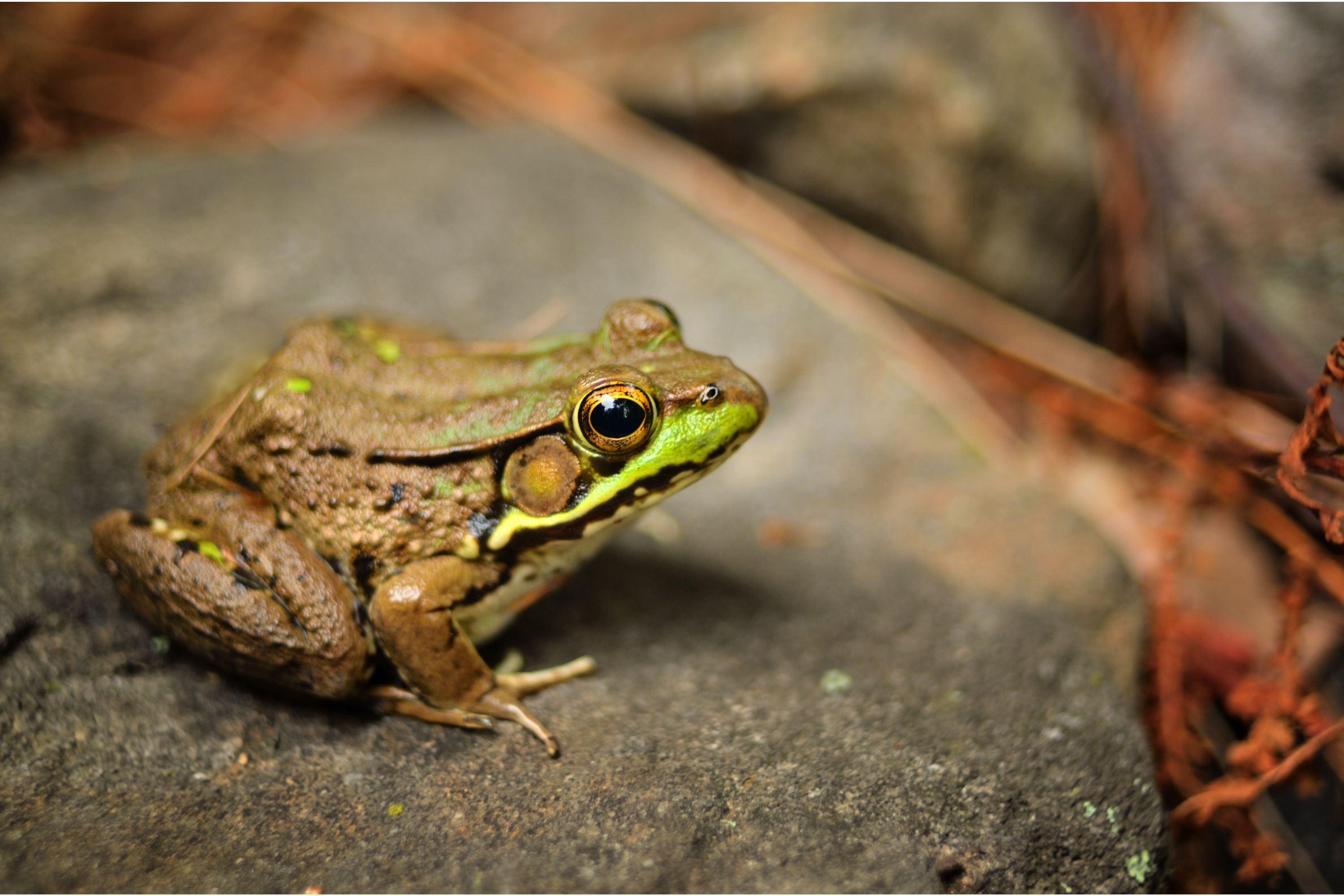The green frog
(Lithobates clamitans)

Description
The green frog (Lithobates clamitans or Rana clamitans) is a species of frog native to eastern North America. The two subspecies are the bronze frog and the northern green frog. The sexes are sexually dimorphic in a few ways: mature females are typically larger than males, the male tympanum is twice the diameter of the eye, whereas in females, the tympanum diameter is about the same as that of the eye, and males have bright yellow throats. The dorsolateral ridges, prominent, seam-like skin folds that run down the sides of the back, distinguish the green frog from the bullfrog, which entirely lacks them. Green frogs usually have green heads while the body is brown, gray, or dark green. The green head can be more or less prominent on certain individuals, with some frogs only having green on the side of their heads while other frogs are green all the way down their back. The belly is white with black mottling. Male green frogs in breeding condition have yellow throats. Green frogs are darker colored on colder days to help absorb heat. Green frogs can sometimes be blue due to a genetic mutation known as axanthism that prevents the frog from producing yellow pigments (yellow and blue pigments together make the color green). Green frogs live wherever shallow freshwater ponds, road-side ditches, lakes, swamps, streams, and brooks are found. Green frogs can be found in vernal pools and other temporary bodies of water, but will usually not breed in them. This species is very opportunistic and is quick to colonize new water bodies such as swimming pools and artificial ponds. Most often seen resting along the shore, they leap into the water when approached. By inhabiting an ecotone, in this case the terrestrial and aquatic habitat boundary, green frogs (and other aquatic ranid frogs), by employing a simple leap, leave behind their many and faster terrestrial enemies that cannot similarly cross that boundary. Green frogs are commonly found sitting on the shore line pointed towards the water. If approached, the frog will quickly jump into the water and either swim to the bottom or float at the surface with only their eyes out. This species is usually diurnal, although they are active at night when temperatures are warm.
Taxonomic tree:







